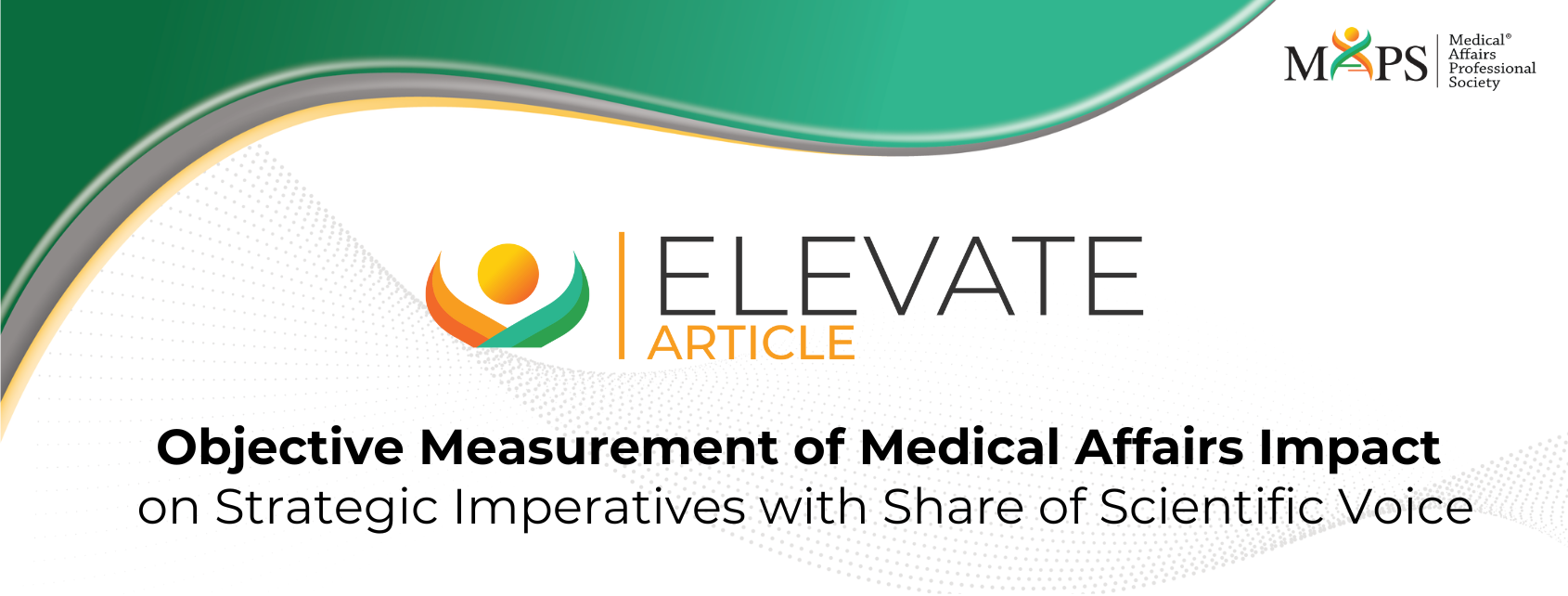
Objective Measurement of Medical Affairs Impact on Strategic Imperatives With Share of Scientific Voice
Central to the role of Medical Affairs is the interpretation, synthesis, and integration of data to inform the scientific narrative and to effectively communicate this information to key opinion leaders (KOLs), healthcare professionals (HCPs), payers, and policymakers in an effort to inform patient care and improve patient outcomes. (1) The scientific narrative underpins the communication strategy of a product’s launch and long-time plan and is built on medical strategic imperatives. Strategic imperatives may include required foundational knowledge, defined and addressable unmet needs and value related to the product’s attributes and its therapeutic area (TA) (2), and, critically, guide all medical communication and engagement activities. Implementing and improving a medical communication strategy requires an objective understanding or tracking of how effective it is. This requires an objective measure of impact. Guidance for the role of Medical Affairs in product strategy and its contribution to launch excellence and development of strategic imperatives has been covered in previous MAPS white papers. (2) (3) This article addresses the metrics that Medical Affairs can use to measure how effectively they communicate on their strategic imperatives, with a specific focus on Share of Scientific Voice (SoSV).
For a Medical Affairs communication strategy to be effective, there should be at least one, and no more than eight, major strategic imperatives. Strategic imperatives should be precise, concise, singular, and measurable and structured in a single sentence or phrase that captures only the essential elements of the concept. (3)



